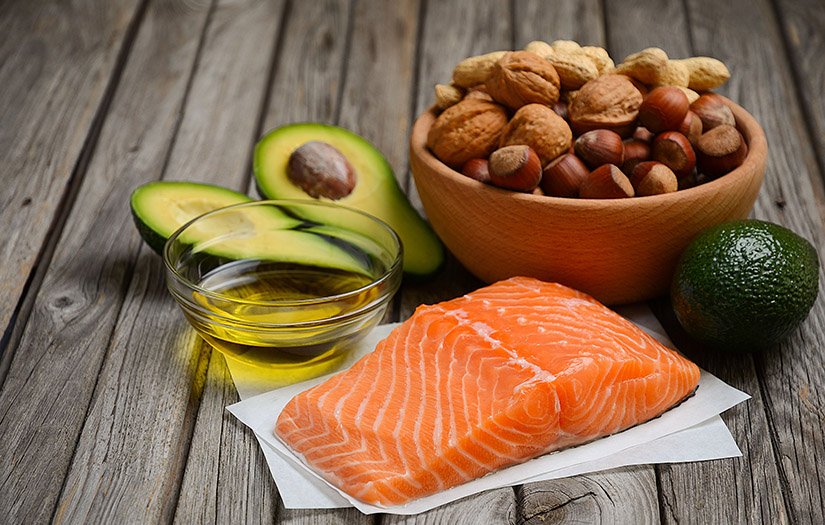Even so, the WHO recommends that fats do not represent more than 30% of daily calories. The important thing is to make sure they are “good” and healthy (like olive oil or avocado).
Fat is an important part of the diet, but finding out how much we should eat can be difficult to calculate.
According to the World Health Organization (WHO), fat should not exceed 30% of total caloric intake if we want to prevent non-communicable diseases, such as diabetes, heart disease, stroke, and cancer.
What are fats?
Fats are one of the three macronutrients (along with proteins and carbohydrates) essential in the diet.
Fat is part of the membranes of all the cells of the body, allows the connection between neurons, and constitutes a reserve of energy necessary to live.
In addition, fat stored within the body helps keep us warm, absorbs vitamins A, D, E, and K, and helps the brain function properly.
In fact, the University of Dakota found that a diet rich in saturated and polyunsaturated fatty acids has a positive effect on mood.
types of fats
Fats can be saturated or unsaturated. Most fatty foods have both types. But there is usually more of one type of fat than the other.
Saturated fats. They are found in foods of animal origin (such as milk and meat), as well as in coconut oil, palm oil, and butter. Overeating is not advised because it raises cholesterol. A diet should have less than 10% of daily calories from these fats.
Trans fat. They have been modified by hydrogenation. This process lengthens the shelf life of food. They should be avoided because they can increase cholesterol. We find them in processed foods, pastries, snacks, and dressings.
unsaturated fats They are present in oils of vegetable origin. Unlike saturated, these can help improve cholesterol levels. Monounsaturated fats and polyunsaturated fats are types of unsaturated fats.
Monounsaturated fats. They hide in avocados, nuts, and olive oil. They help lower LDL (‘bad’) cholesterol and raise HDL (‘good’).
polyunsaturated fats. They are found in sunflower oil, fish, and shellfish. There are two types: omega-3 fatty acids (salmon or walnuts) and omega-6 (soybean oil).
How much fat should I consume per day?
One gram of fat provides 9 calories. Thus, the rest of the calories that remain to be covered must be supplied through carbohydrates (1g = 4 Kcal) or proteins (1g = 4Kcal).
A balanced diet contains about 30% of its calories from fat.
In this way, depending on the daily calories in the diet, the range of fats varies:
1,500 calories: about 50 grams of fat per day
2,000 calories: about 67 grams of fat per day
2,500 calories: about 83 grams of fat per day
If you want to lose weight, it is recommended not to exceed 5 daily servings of fat (one tablespoon of olive oil is considered a serving, equivalent to two tablespoons).
However, studies show that diets high in “good” fats (such as the Mediterranean diet) offer numerous health benefits.
In the Mediterranean diet, which includes a wide variety of plant and animal foods (fish, meat, dairy products, olive oil, vegetables, legumes…), fats represent almost 40% of total calories.
Foods high in healthy fats
Regardless of the type of diet you follow, it’s important to strike a balance between different types of healthy fats.
While most foods contain a mix of different fats, some are especially high in certain types.
Dried fruits. All its variants are a source of good fats, but especially walnuts are concentrated in this nutrient, among which omega 3 and omega 6 stand out.
Extra virgin olive oil. Of all the oils it is one of the healthiest specimens. It offers 99.9% fat, among which monounsaturated fatty acids predominate.
Blue Fish. Polyunsaturated fatty acids that our body cannot produce predominate. Among these, omega 3 (docosahexaenoic acid and eicosapentaenoic acid) stands out.
avocado. It has fats among which monounsaturated fatty acids predominate. In addition, it provides fiber, potassium, vitamin E, and carotenoids for the body.
olives. They are fruits rich in monounsaturated fats, which are accompanied by other good nutrients for the body such as potassium, magnesium, and calcium.
Soy. Legumes are rich in fats and vegetable proteins. The presence of flavonoids with antioxidant action stands out, as well as potassium, vegetable iron, calcium, and unsaturated fats.
Seeds. Sunflower seeds, pumpkin seeds, chia, flaxseed, sesame, and other seeds are all concentrated sources of unsaturated fats that are beneficial to our health.
As you can see, fats perform important functions in the body, in addition to making food taste better and helping us feel satisfied.
Eating the right amounts and the right types of fat can go a long way toward reducing the risk of disease and improving our overall health.

